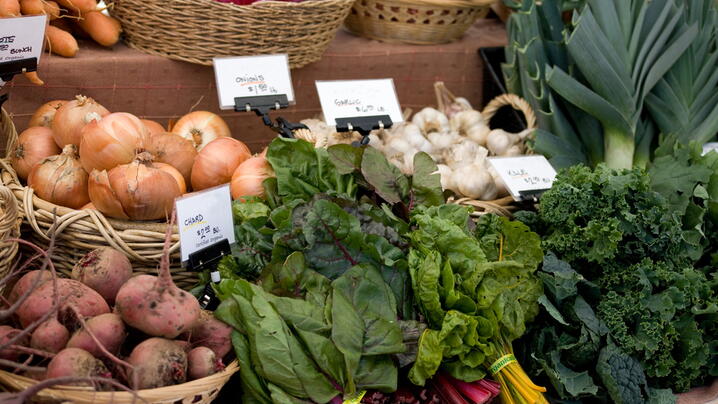
by Laura Godderis, director of survey research, ICMA
On National Ag Day (March 20), ICMA released a series of regional snapshots of local governments and local food systems information that were developed in partnership with the Michigan State University Center for Regional Food Systems and support from the W.K. Kellogg Foundation. These nine profiles, organized around the nine U.S. Census Geographic Divisions, summarize key state- and region-level data points from ICMA's 2015 survey on local governments’ food system activities. They also point to specific examples of how local governments in each region are engaged in food system planning, programming, partnerships, and policy. Examples include:
- Knoxville and Knox County, Tennessee, home of the nation’s first food policy council. City and county officials are among a diverse coalition that has worked to address food access and economic development for more than three decades.
- Hernando County, Florida, where the parks and recreation department oversees operations of a community cannery, open to the public for processing of fruits, vegetables, meat, and seafood.
- Whatcom County, Washington, where both the health department and the planning and development services department support local and regional food system activities, including production and infrastructure strategies outlined in the county’s Agriculture Strategic Plan.
- Helena, Montana, worked with a coalition of community partners for its 6th Ward Garden Park. The park offers community garden plots to mostly low-income residents and contains an edible forest with significant food production potential.
- Shelton, Connecticut, has grown its local food system and advanced smart growth through brownfield redevelopment. The city, along with an economic development corporation, leveraged a combination of local, state, and federal funding to cleanup the site and construct a 3,000-square foot permanent building and outdoor market space. Some 15 jobs were created through this effort.
Hungry for numbers? These briefs cluster survey and secondary data by three themes: community health and security, production and infrastructure, and economic development. We summarize the level of local food system activities related to each theme and provide comparisons to regional and national averages.
Curious about where your community might benefit from local food system support? We also include at-a-glance, state-level statistics on health, income, and employment that provide context for potential local food system interventions.
We developed these briefs in response to feedback from an earlier webinar hosted by the Johns Hopkins Center for a Livable Future, where ICMA and MSU staff introduced the study. Local government leaders in Baltimore, Maryland; Santa Fe County, New Mexico; and Lewiston, Maine, shared lessons learned from their food systems work. We hope these will provide further insights into our research, convenient access to complementary data, and attention to the wide array of food system activities local governments are engaged in across the country.
Related Resources
Growing Local Food Systems: Five Strategies for Local Government Leaders. This article details the results of case studies that looked at how four communities created best practices for local food systems.
Community Health and Food Access: The Local Government Role. This guide from 2006 provides an overview of strategies and approaches that cities and counties can use to improve access to healthy foods.
Creating Community Capital Through Local Food. This presentation from the 2014 ICMA Annual Conference looks at the economic benefits of having a strong local food system.
New, Reduced Membership Dues
A new, reduced dues rate is available for CAOs/ACAOs, along with additional discounts for those in smaller communities, has been implemented. Learn more and be sure to join or renew today!
